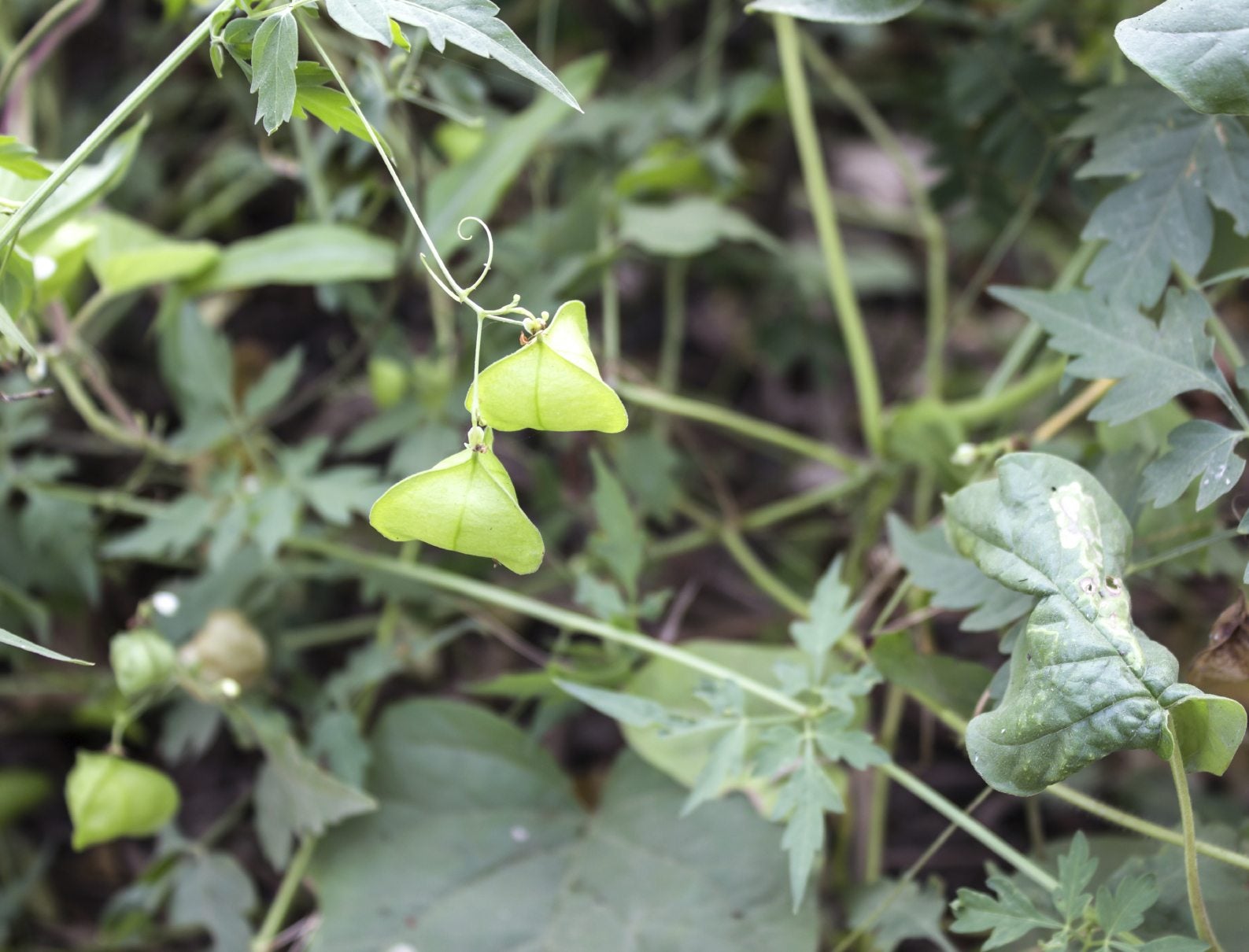Balloon Vine Plant In Gardens: Tips For Growing Love In A Puff Vine


Love in a puff plant is a tropical to subtropical vine with tiny white flowers and green papery fruits that are similar to tomatillos. The vine is a heat lover that is charming when draped over a fence or trellis. Unfortunately, in southern landscapes it has become a nuisance plant, escaping cultivation and taking over the local flora. If you have a long growing season, though, try love in a puff balloon vine as an annual plant with architectural interest and whimsical fruits.
About Love in a Puff Balloon Vine
Love in a puff vine is so named because of the seeds inside the papery fruits. If you squeeze the fruits, which have three interior chambers, three seeds erupt through the membranes. The seeds have a distinct shape of a white heart etched onto a dark, round form. The heart leads to the common name. The botanical name, Cardiospermum halicacabum, indicates the form as well. In Latin, 'cardio' means heart and 'sperma' means seed. Another name is balloon vine plant because of the green, suspended, fruiting globes. This member of the Soapberry family captures the imagination with the strange and wonderful fruit and the surprising seedy sentiment. The leaves are deeply divided and toothed, and quite lacy overall. The small flowers appear July through August and have four sepals, four petals, and yellow stamen. The fruit looks like a blown-up paper balloon in shades of green with blushed tops at the pedicel. Interestingly, the vine provides the main ingredient of a substitute for cortisone. Balloon vine plant is often confused with some species of clematis because of the compound lance-shaped leaves and frilly tendrils on the stems. These tendrils anchor the plant as it grows vertically and helps the vine move over obstacles. The vine is native to tropical America but grows well in summer in much of the United States. Northern gardeners growing love in a puff can use it as a fast growing annual, while southern gardeners can use it year-round.
How to Grow Love in a Puff Vine
Fast growing vines like love in a puff plant are great for covering up those areas in the landscape that are not so tidy. Love in a puff vine forms a thick mat useful for covering up that fallen fence that you never got around to mending or the overgrown weeds in the back of the yard. Its tenacity can be a problem in some regions and care should be exercised not to let the plant escape into nature. Love in a puff balloon vine needs full sun in well-drained soil. It is a useful annual in United States Department of Agriculture zones 8 to 11. In the lower zones, it performs as an annual. Sow seed indoors in late winter to early spring and plant outdoors after hardening off the seedlings when all danger of frost has passed. Water the plant deeply and then allow it to dry between waterings once established. Growing love in a puff may need a little help as the plant begins to scrabble up your chosen support, but once the plant produces numerous stems, they twine together and create a scaffold of their own. Allow the fruits to dry completely on the vine before harvesting them for seed. This is a fun plant that will liven up the landscape with the quirky little lanterns decorating your yard.
Sign up for the Gardening Know How newsletter today and receive a free copy of our e-book "How to Grow Delicious Tomatoes".

Bonnie Grant is a professional landscaper with a Certification in Urban Gardening. She has been gardening and writing for 15 years. A former professional chef, she has a passion for edible landscaping.